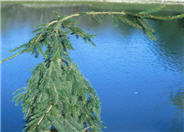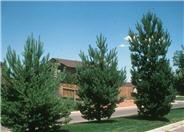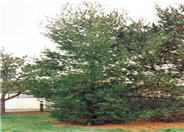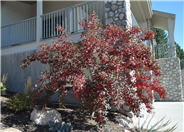
Common name:Weeping Norway Spruce
Botanical name:Picea abies 'Pendula'
Weeping Norway spruce is an artful accent evergreen with weeping, spreading branches. Spring growth is a bright green, with summer needles a rich green. Typically it is grown on a stake to feature its pendulous habit; it's height depends on where it is staked, but generally from 3 to 10 feet tall and up to 10 feet wide. It can also be grown as an undulating groundcover, draping over walls and slopes.

Common name:Scotch Pine
Botanical name:Pinus sylvestris
Scotch pine is a medium-large pine growing 30 to 50 feet tall and nearly as wide. It has an upright, pyramidal habit in its youth, becoming broad and flat-topped as it ages. Branches are strongly horizontal. Older bark has a distinctive orange color (look towards the top of the tree to catch a glimpse). Blue-green needles are stiff, vary in length, and twist 360 degrees. Cones are 1 to 3 inches in length. A number of cultivars are avaialble, including dwarf and prostrate forms.

Common name:Eastern White Pine
Botanical name:Pinus strobus
Eastern white pine is a fast growing, pyramidal tree with strong, horizontal branches, growing about 50 to 80 feet tall and 15 to 20 feet wide. It has long, blue green needles that lends it an airy, open appearance. 8-inch long cones are pendulous and ripen in the fall. A columnar form, P. s. 'Fastigiata" has a similar, open habit but grows only about 7 to 10 feet across.

Common name:Purpleleaf Sandcherry
Botanical name:Prunus x cistena
Purpleleaf sandcherry is a deciduous shrub valued for its reddish-purple foliage, fragrant white and pink spring flowers, and purple-black fruit. It grows about 7 to 10 feet tall and 5 to 8 feet wide, with an upright, vase shape. It is sometimes sold as a single-stem tree, but will require maintenance to maintain this form. Bark is a dark brown to red, and is a nice contrast in the winter garden. Branches are nice in vases.
| Designer: Kelly Pack | Kelly Home 1 |
Photographer: GardenSoft |
Water Saving Tip:
Check the soil's moisture level before watering.
You can reduce your water use 20-50% by regularly checking the soil before watering.
